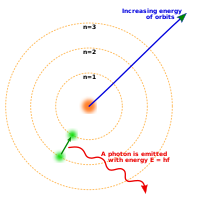
Photo from wikipedia
In the 1980s, a number of philosophers argued that perception is analog. In the ensuing years, these arguments were forcefully criticized, leaving the thesis in doubt. This paper draws on… Click to show full abstract
In the 1980s, a number of philosophers argued that perception is analog. In the ensuing years, these arguments were forcefully criticized, leaving the thesis in doubt. This paper draws on Weber’s Law, a well-entrenched finding from psychophysics, to advance a new argument that perception is analog. This new argument is an adaptation of an argument that cognitive scientists have leveraged in support of the contention that primitive numerical representations are analog. But the argument here is extended to the representation of non-numerical magnitudes, such as luminance and distance, and shown to apply to perception and not just cognition. The relevant sense of ‘analog’ is also clarified, and two powerful objections are addressed. Finally, the question whether perception’s analog vehicles are located in conscious experience is explored and related to a well-known controversy within psychophysics.
Journal Title: The Journal of Philosophy
Year Published: 2019
Link to full text (if available)
Share on Social Media: Sign Up to like & get
recommendations!